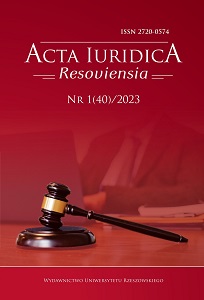THE IMPORTANCE OF FORENSIC ODONTOLOGY IN IDENTIFYNG THE VICTIMS OF MASS DISASTERS
THE IMPORTANCE OF FORENSIC ODONTOLOGY IN IDENTIFYNG THE VICTIMS OF MASS DISASTERS
Author(s): Marcin KoniecznySubject(s): Methodology and research technology, Criminology, Victimology
Published by: Wydawnictwo Uniwersytetu Rzeszowskiego
Keywords: forensic odontology; mass incidents; forensics; identification of victims;
Summary/Abstract: The article presents the issues related to the identification of victims thanks to odontological expertise. The development of genetics gives forensics a great tool, which is the analysis of the genetic profile of DNA, which categorically enables the identification of human remains. However, this type of test is not possible in all cases. It is only applicable for the preservation of soft tissues, otherwise the preserved dentition will be an excellent identification material. The method is often used when identifying bodies exposed to high temperatures and in advanced decomposition. The development of odontological expertise would be impossible without the contribution of eminent dentists, such as Adolf Zsigmondy. By developing the first graphical tooth marking system, he paved the way for today’s TDS and UNS systems. A good dentition classification system is an indispensable tool for odontologists and dentists working on the identification of cadavers and is directly related to the need to use comparative materials, also key in the effective identification of cadavers, and sometimes human remains. These are data obtained from dental offices, in the form of comprehensive information about patients – their dental treatment cards, orthodontic casts, fragments of dentures and crowns, X-rays, etc. and enriched through dental databases. As a result, the odontological expertise and its development enable the effective identification of about 60% of the corpses examined with the help of this procedure, when DNA material cannot be used for this purpose.
Journal: Zeszyty Naukowe Uniwersytetu Rzeszowskiego - Seria Prawnicza
- Issue Year: 2023
- Issue No: 40
- Page Range: 72-81
- Page Count: 10
- Language: English

